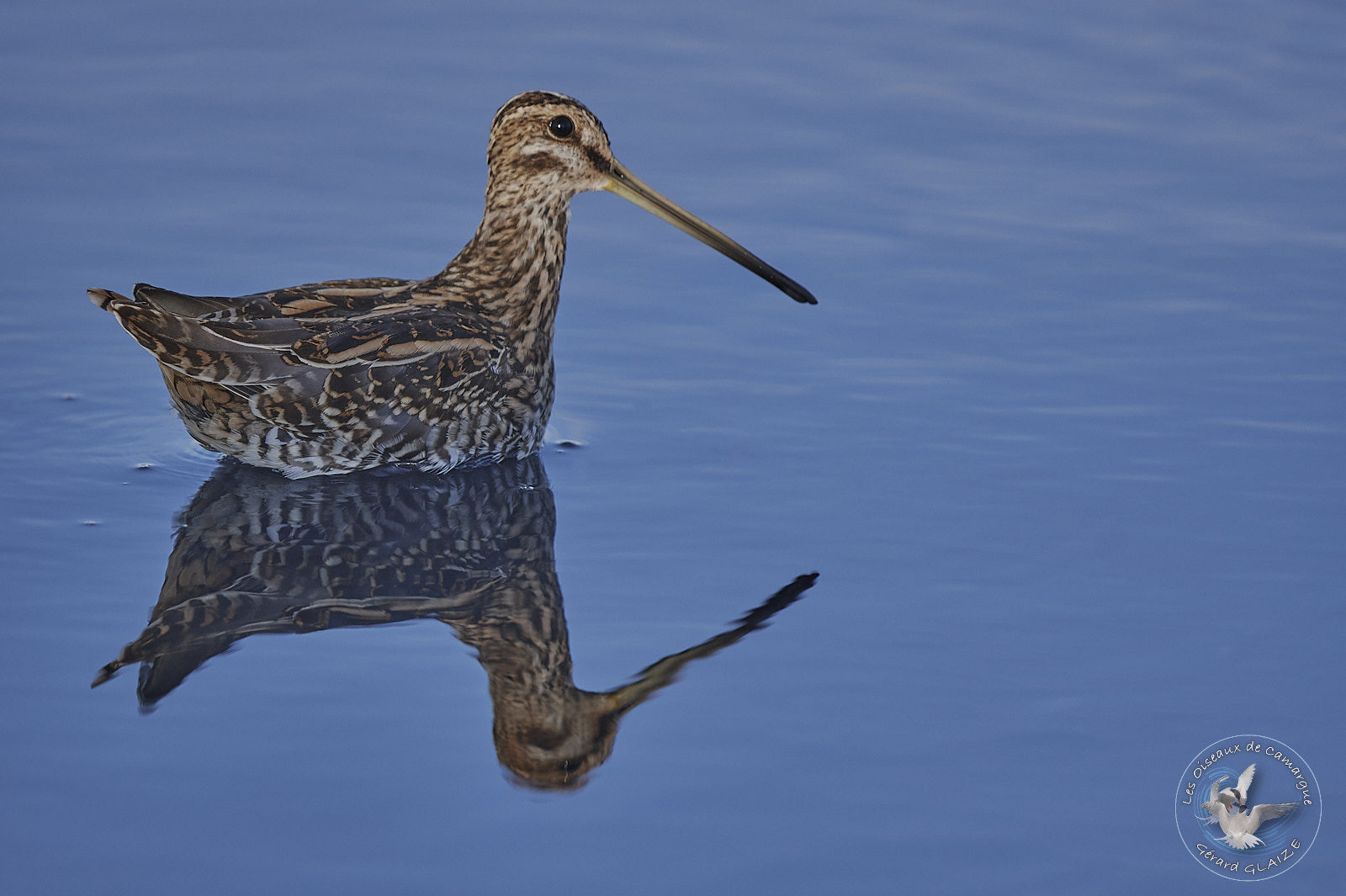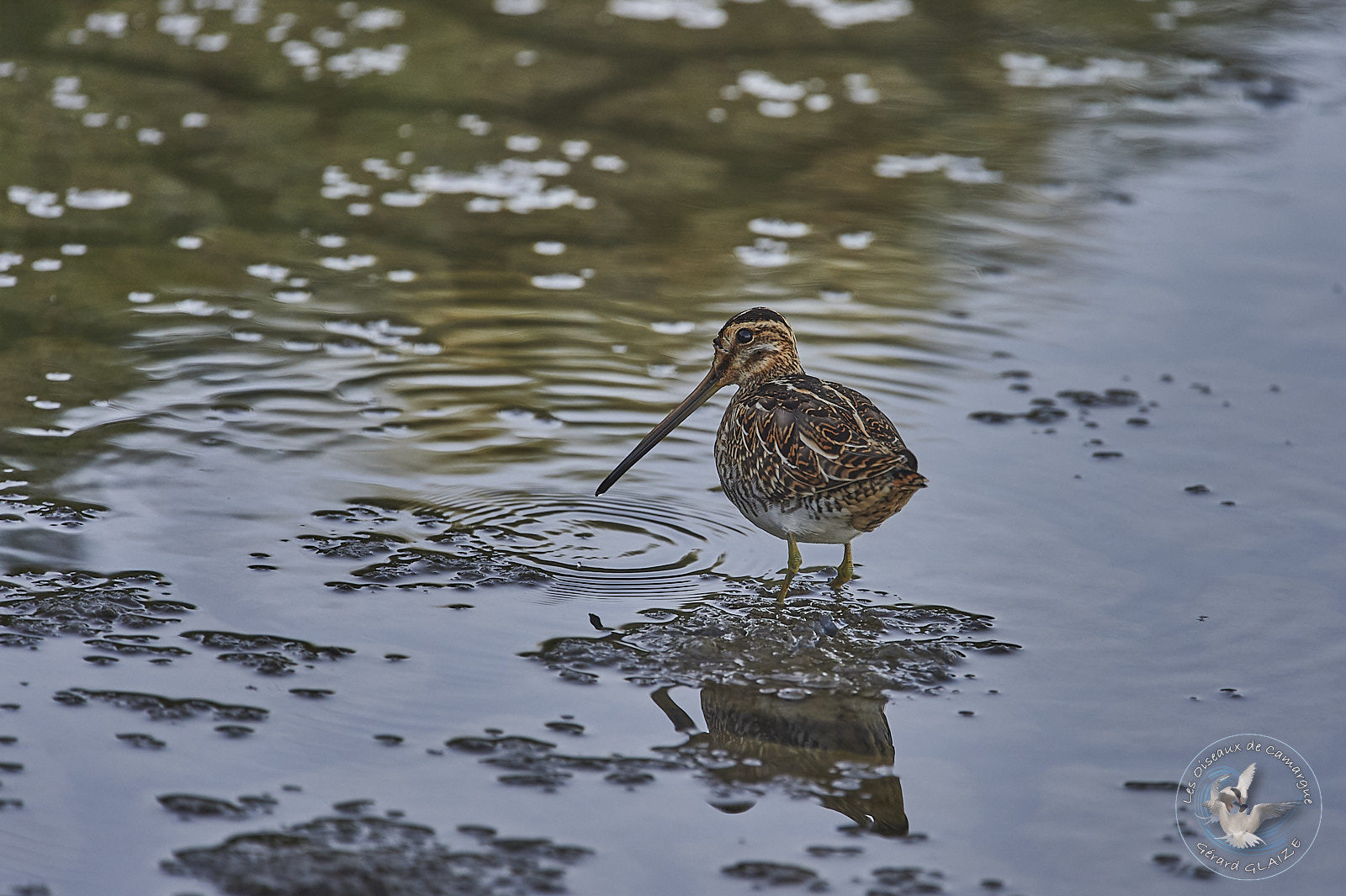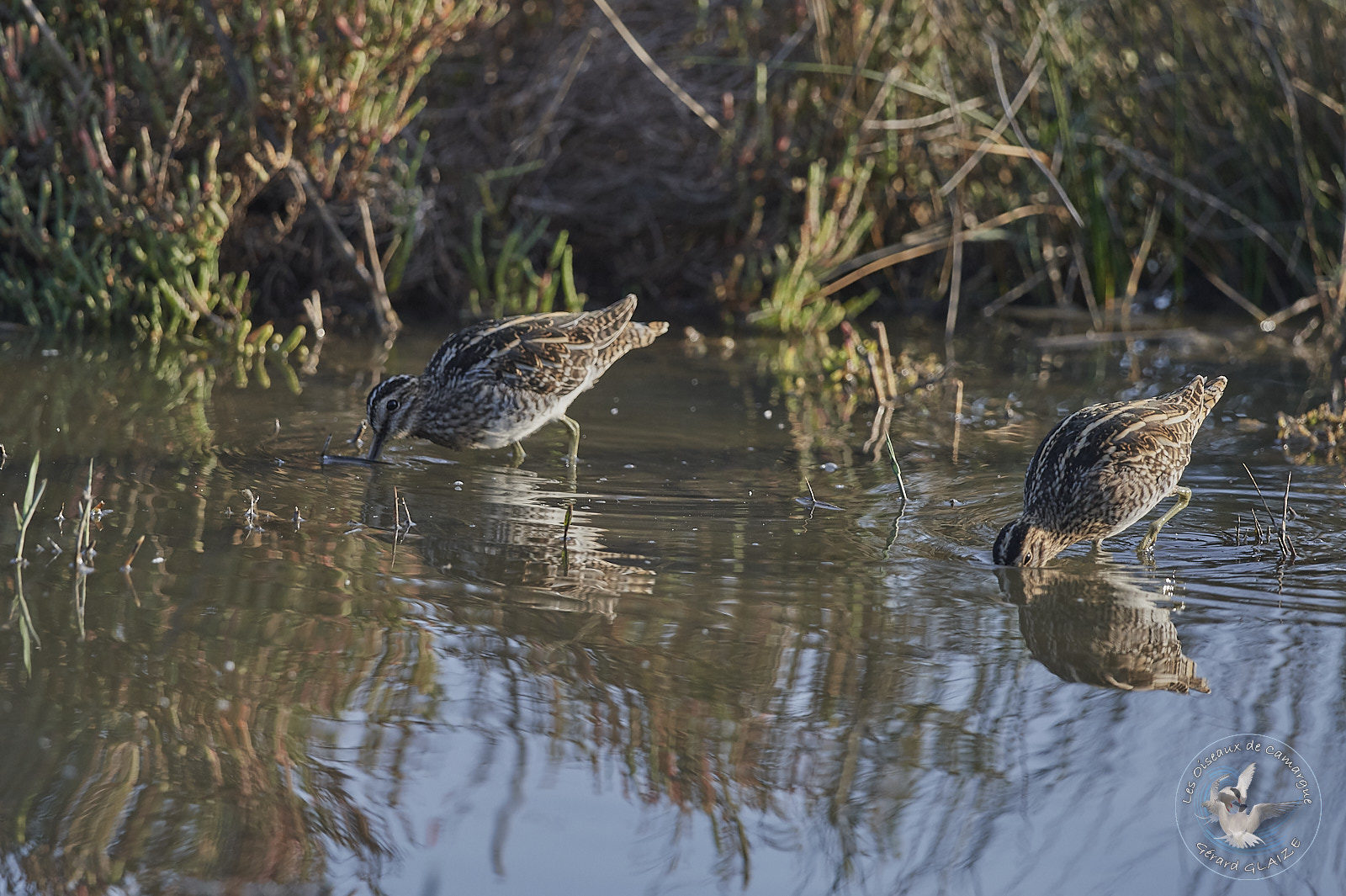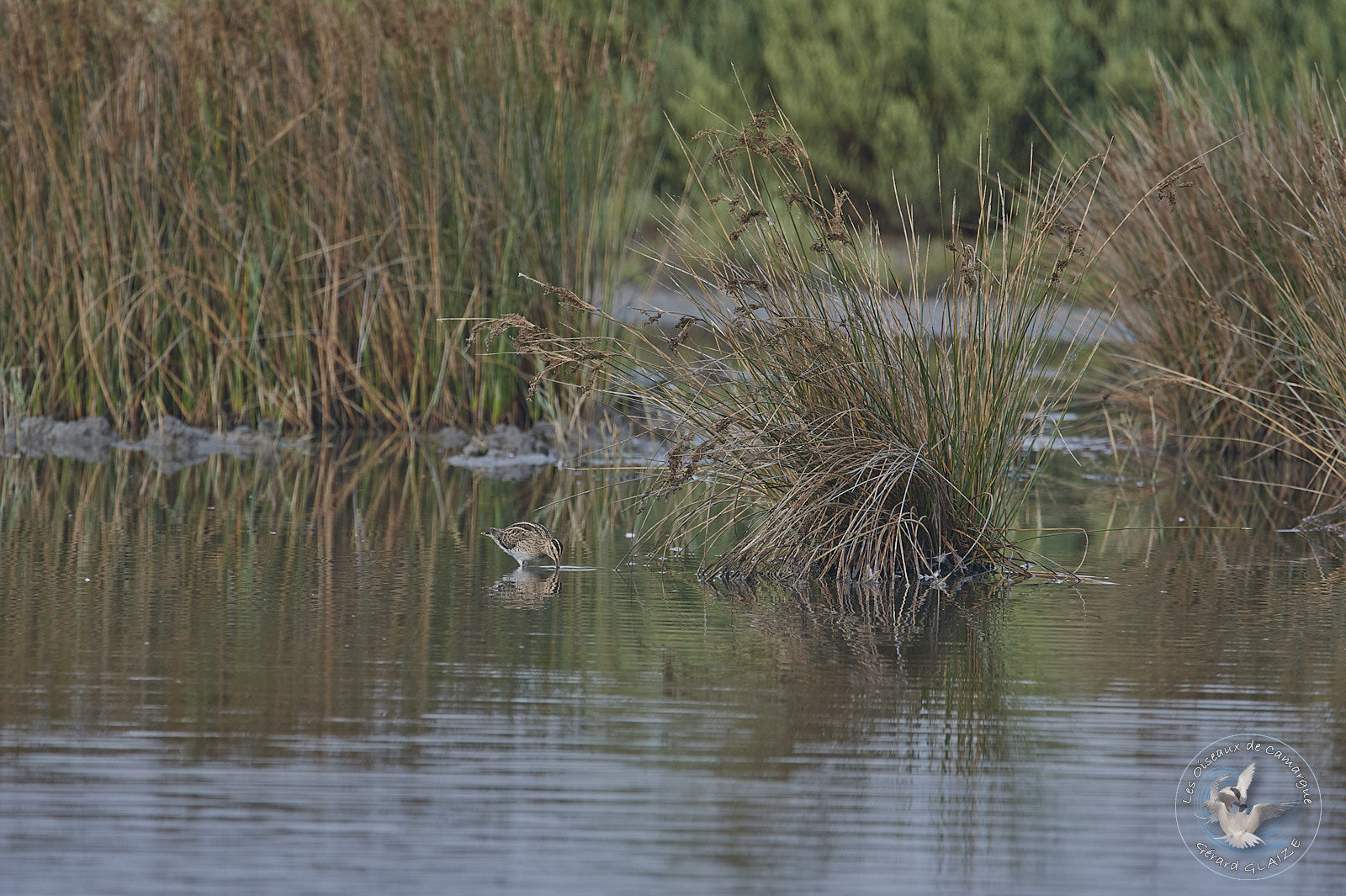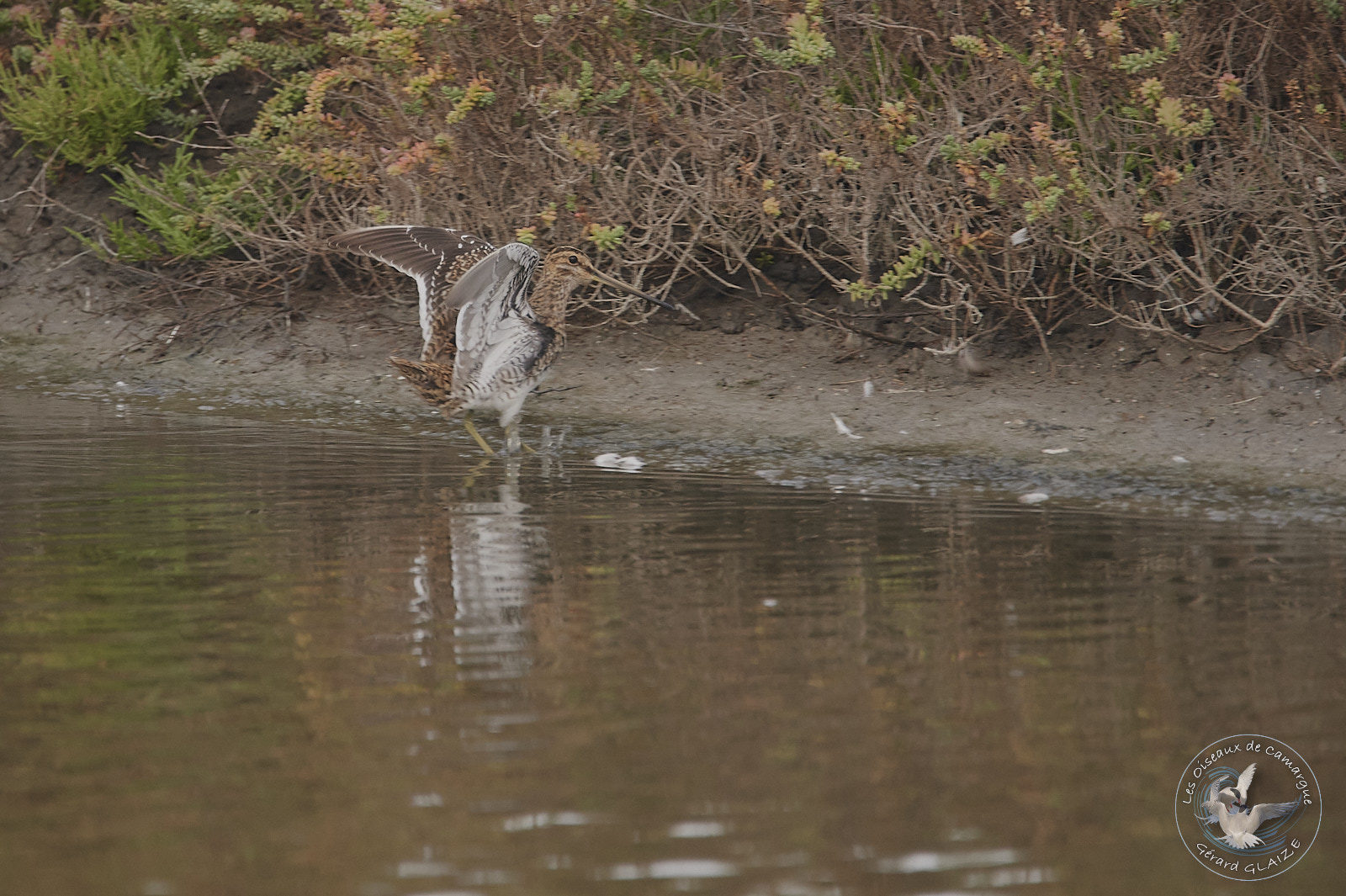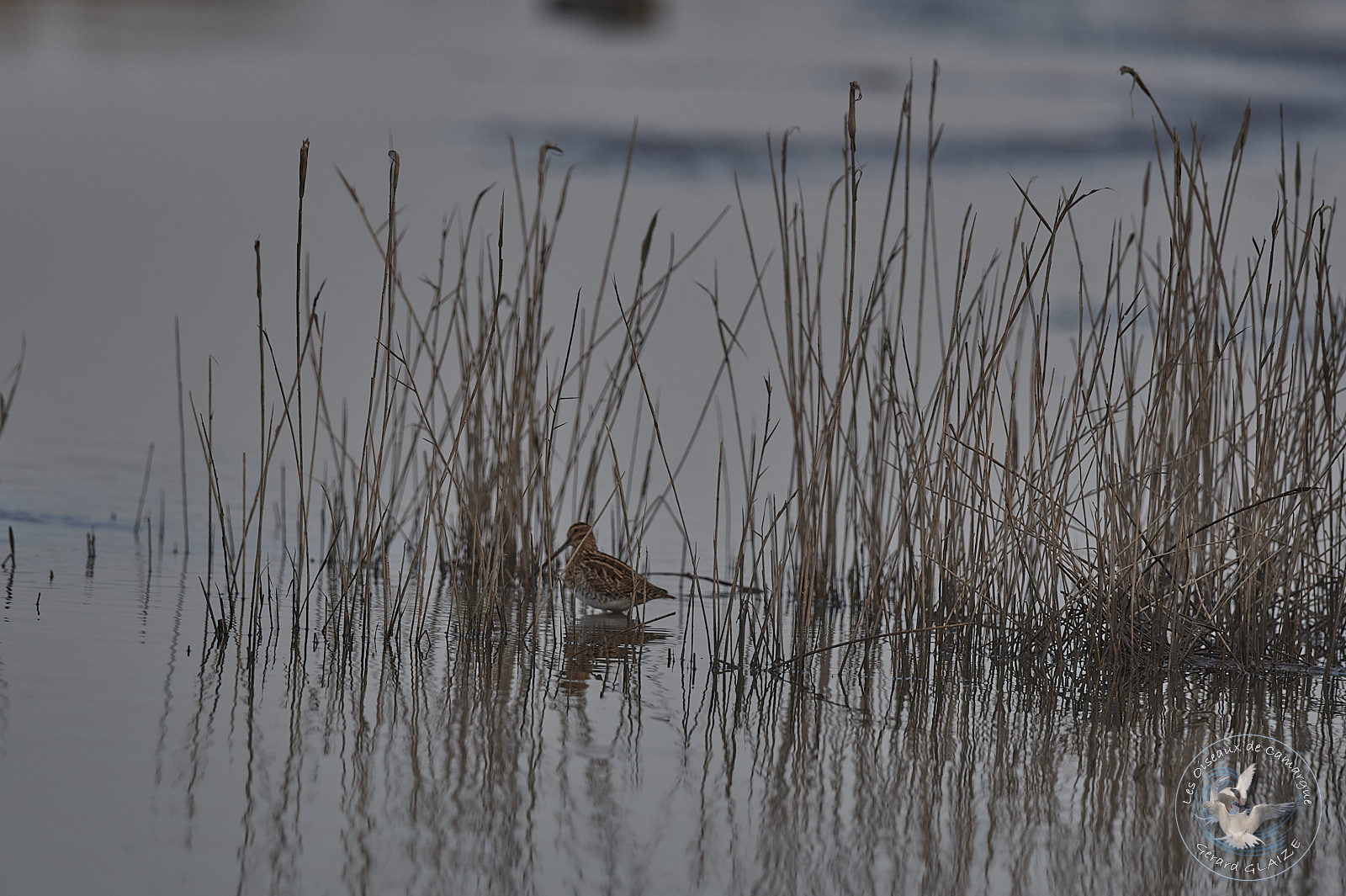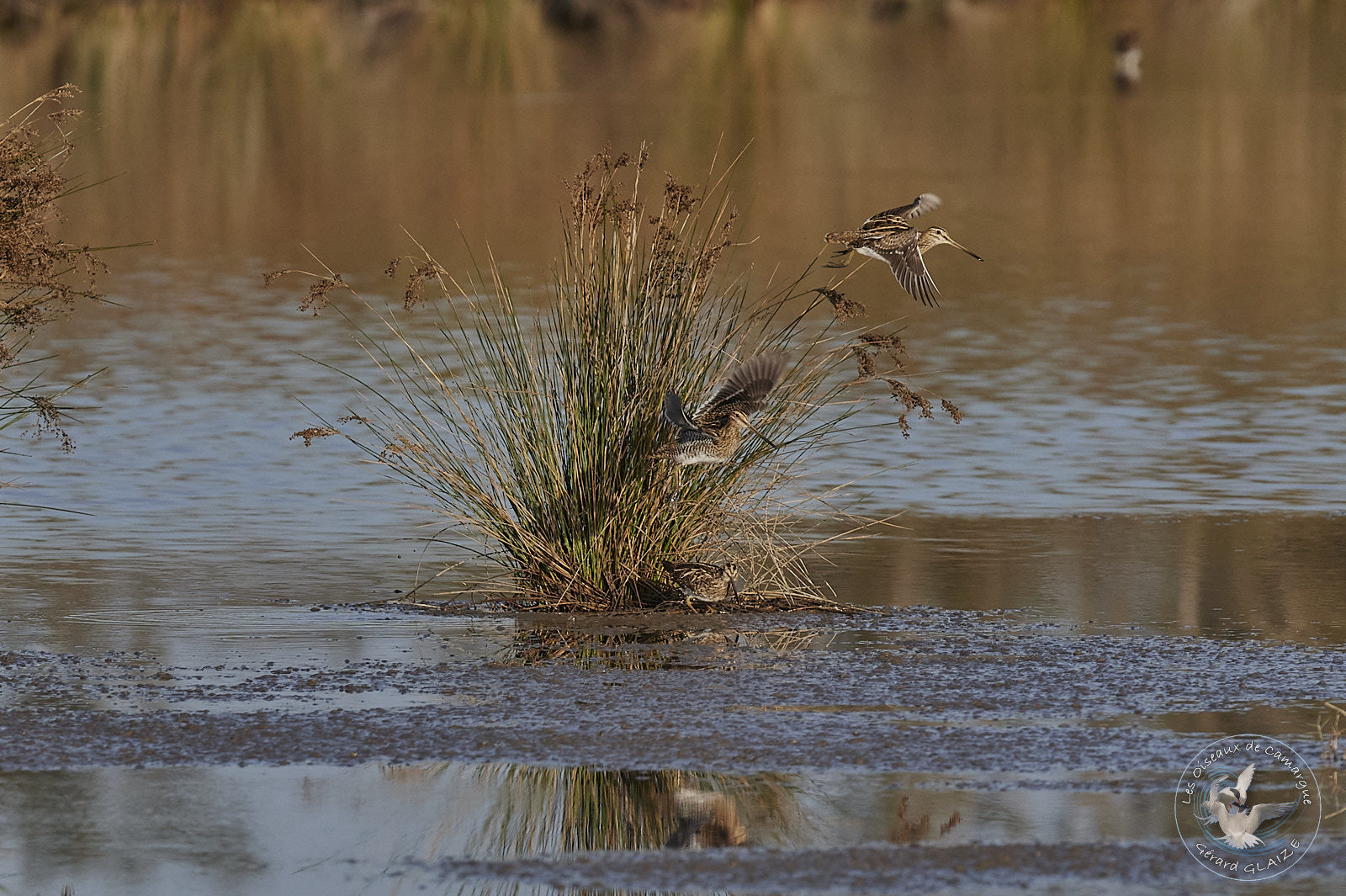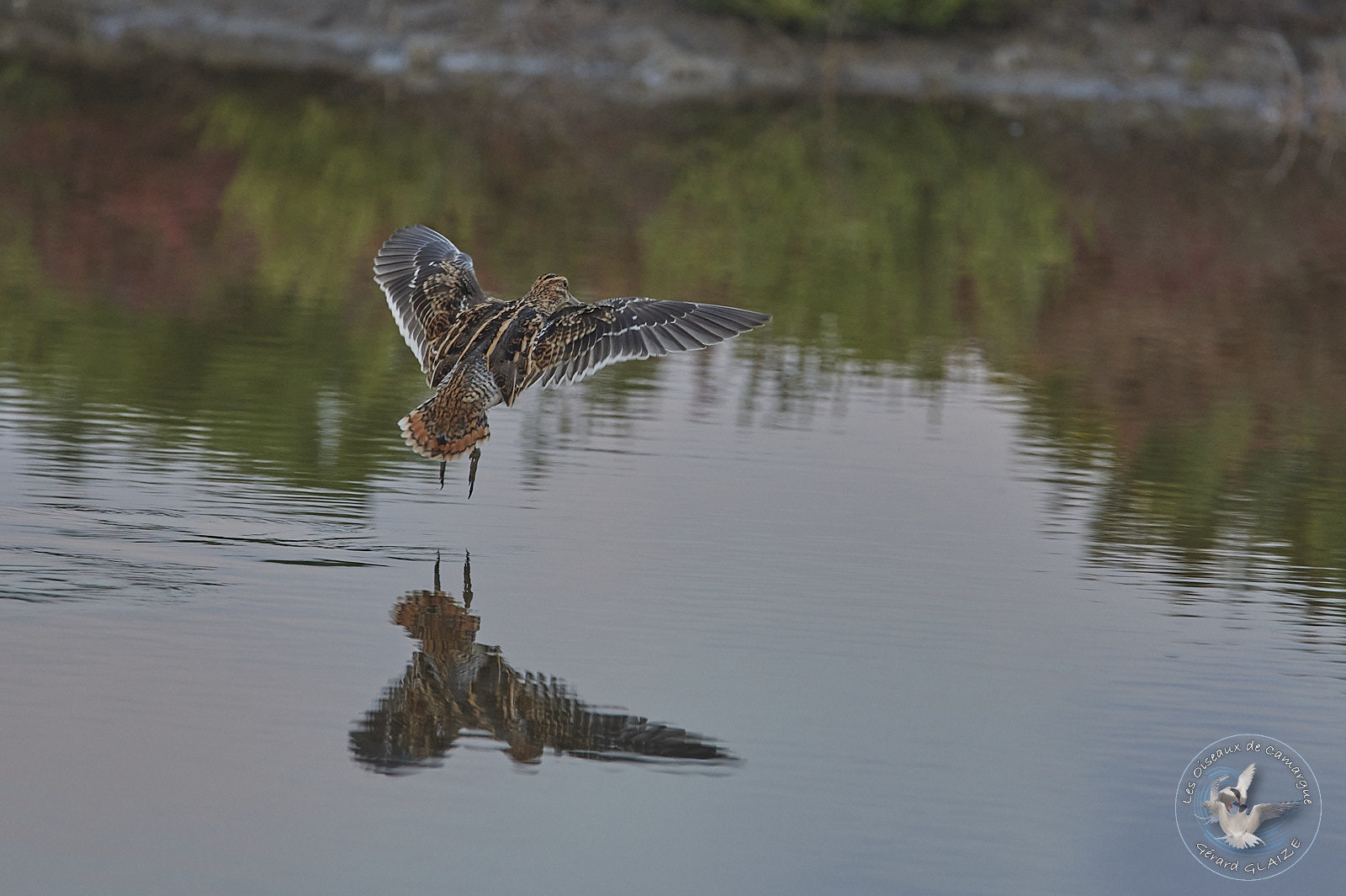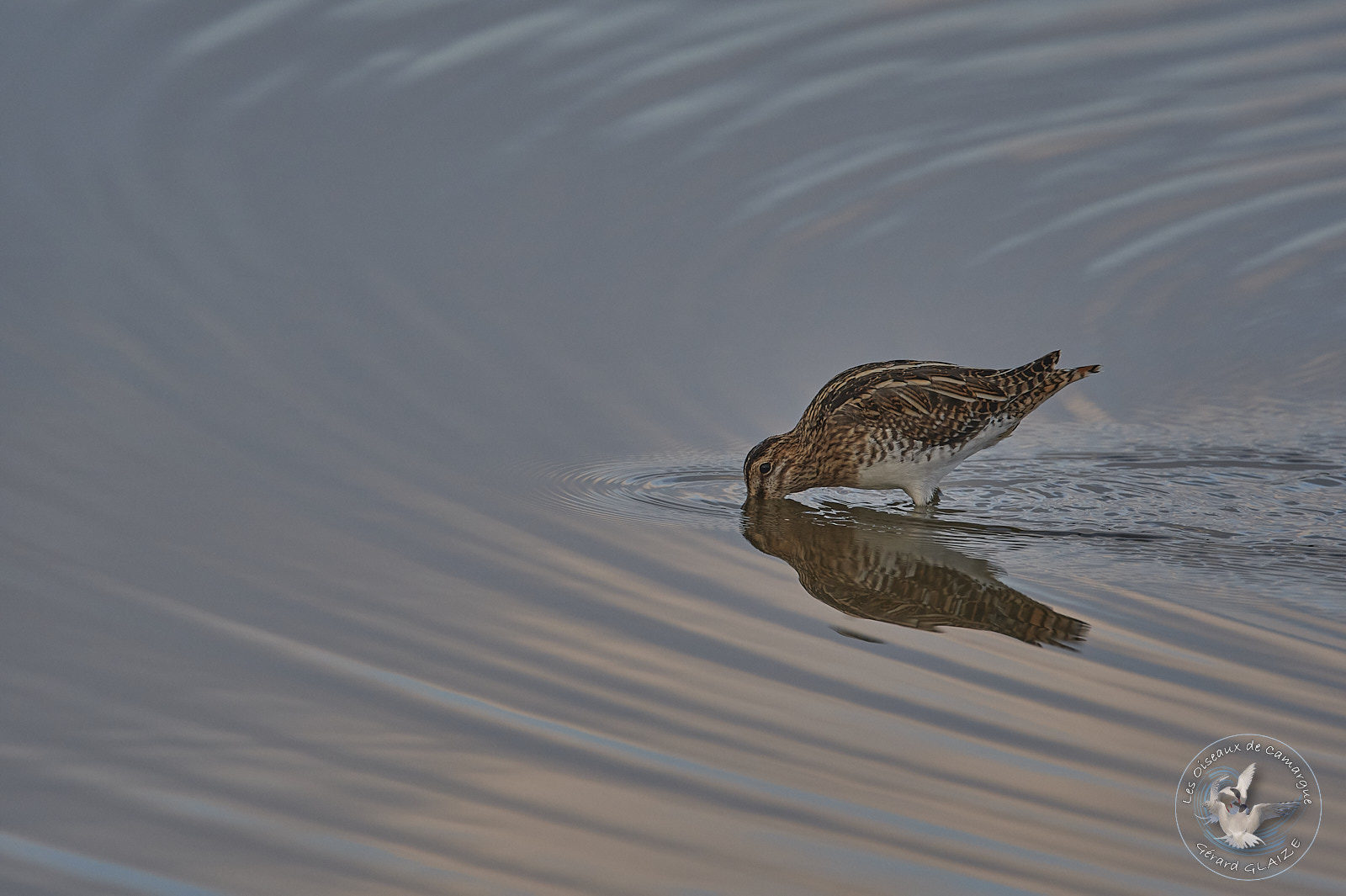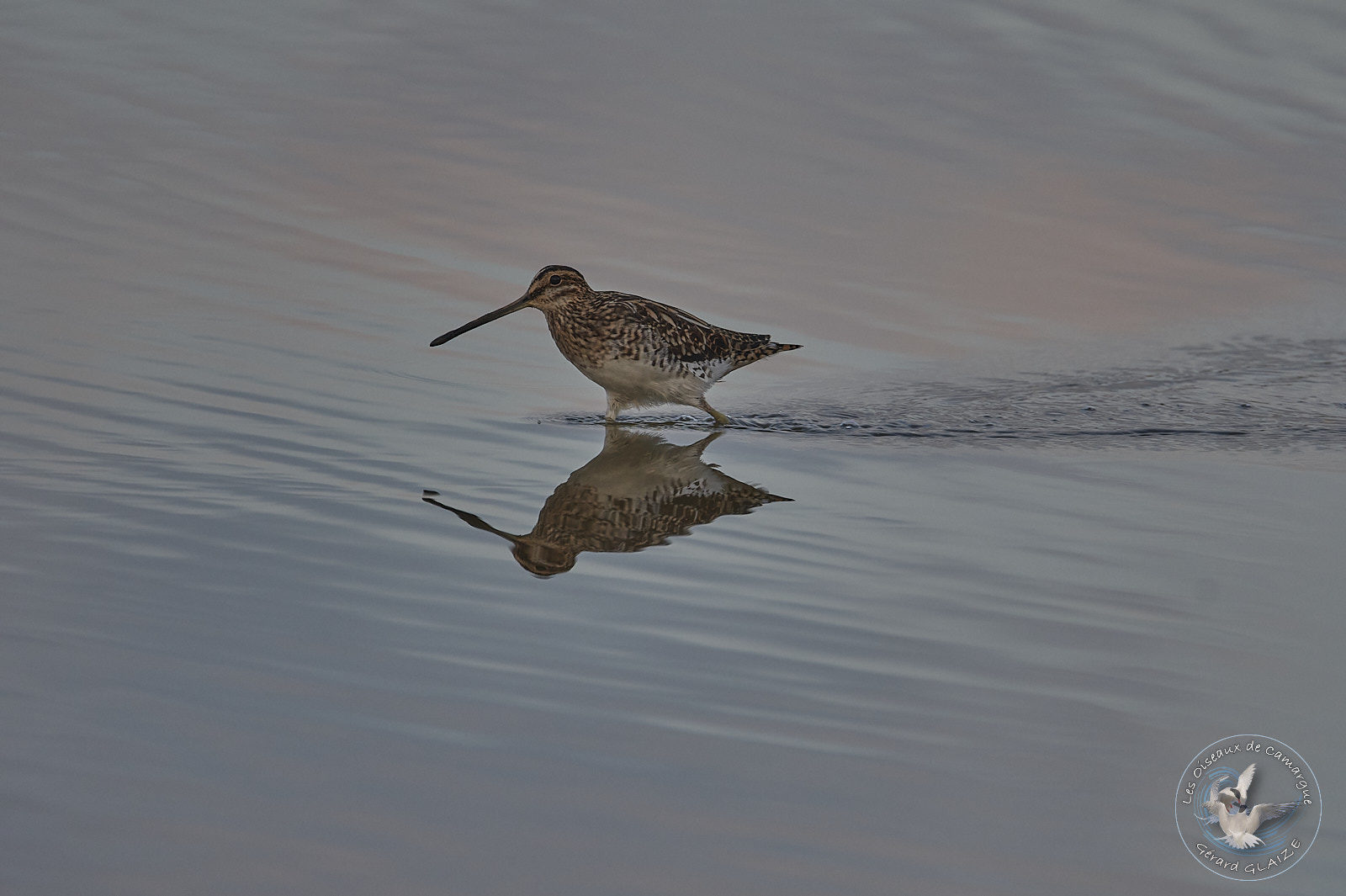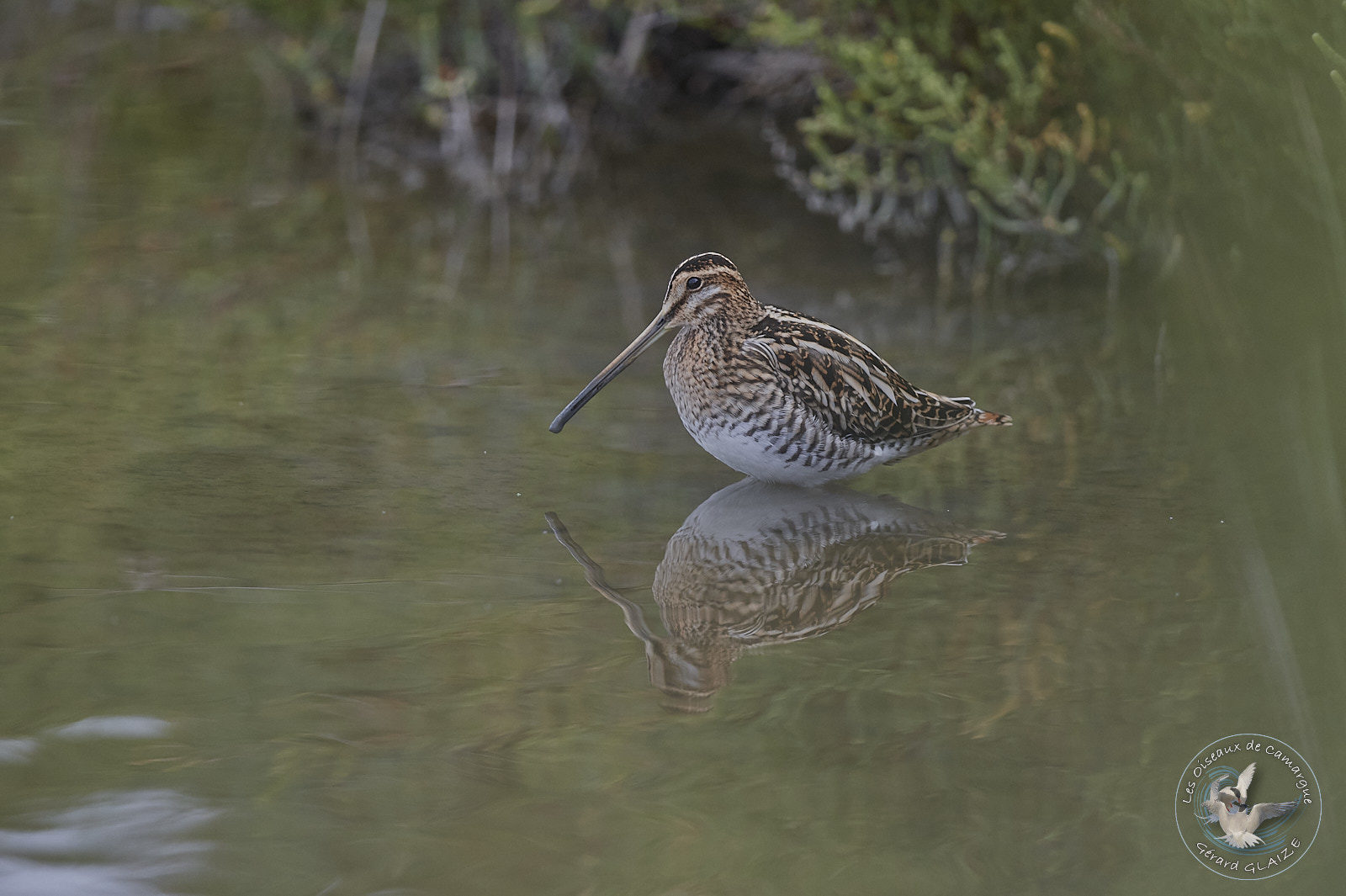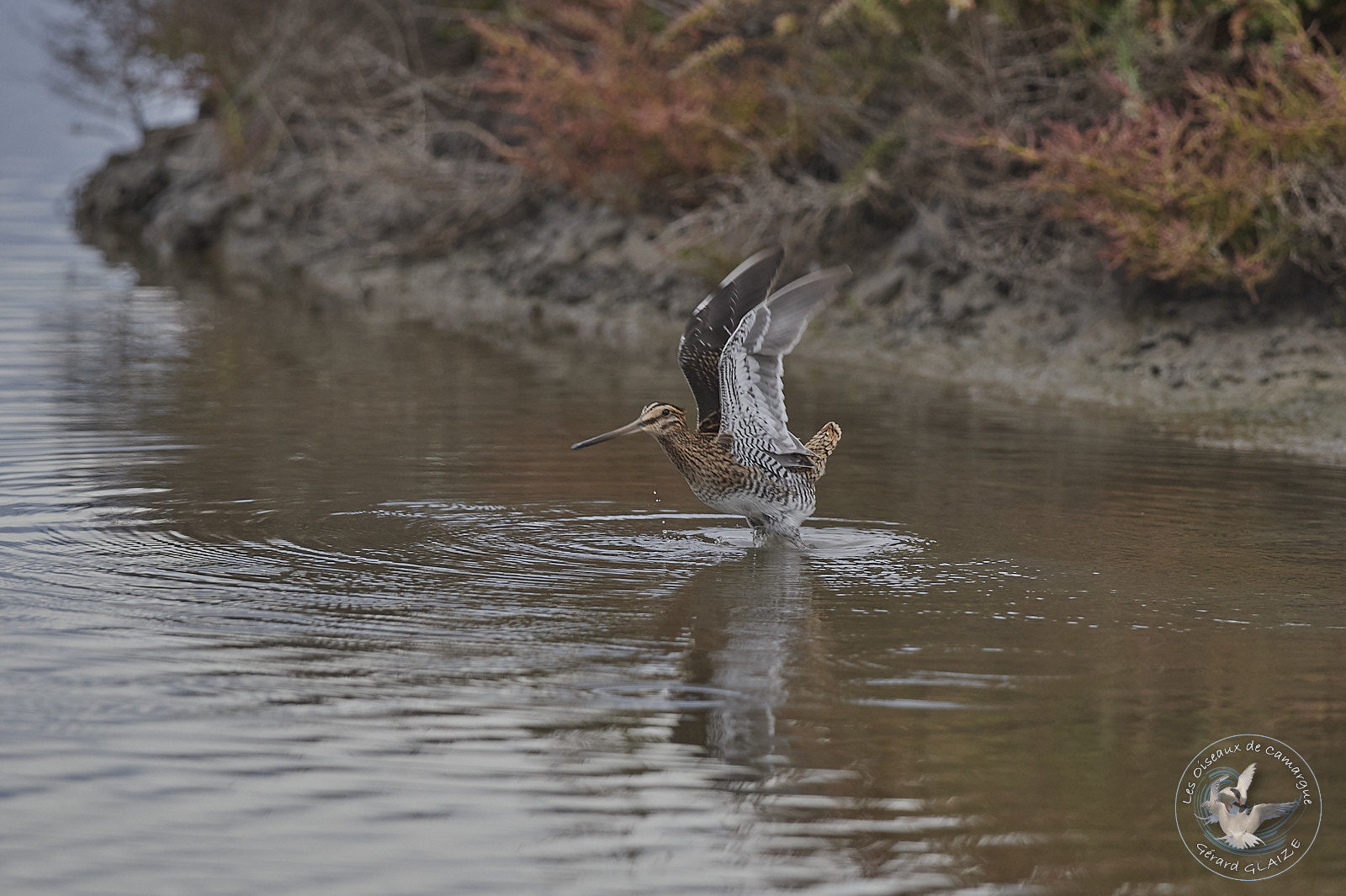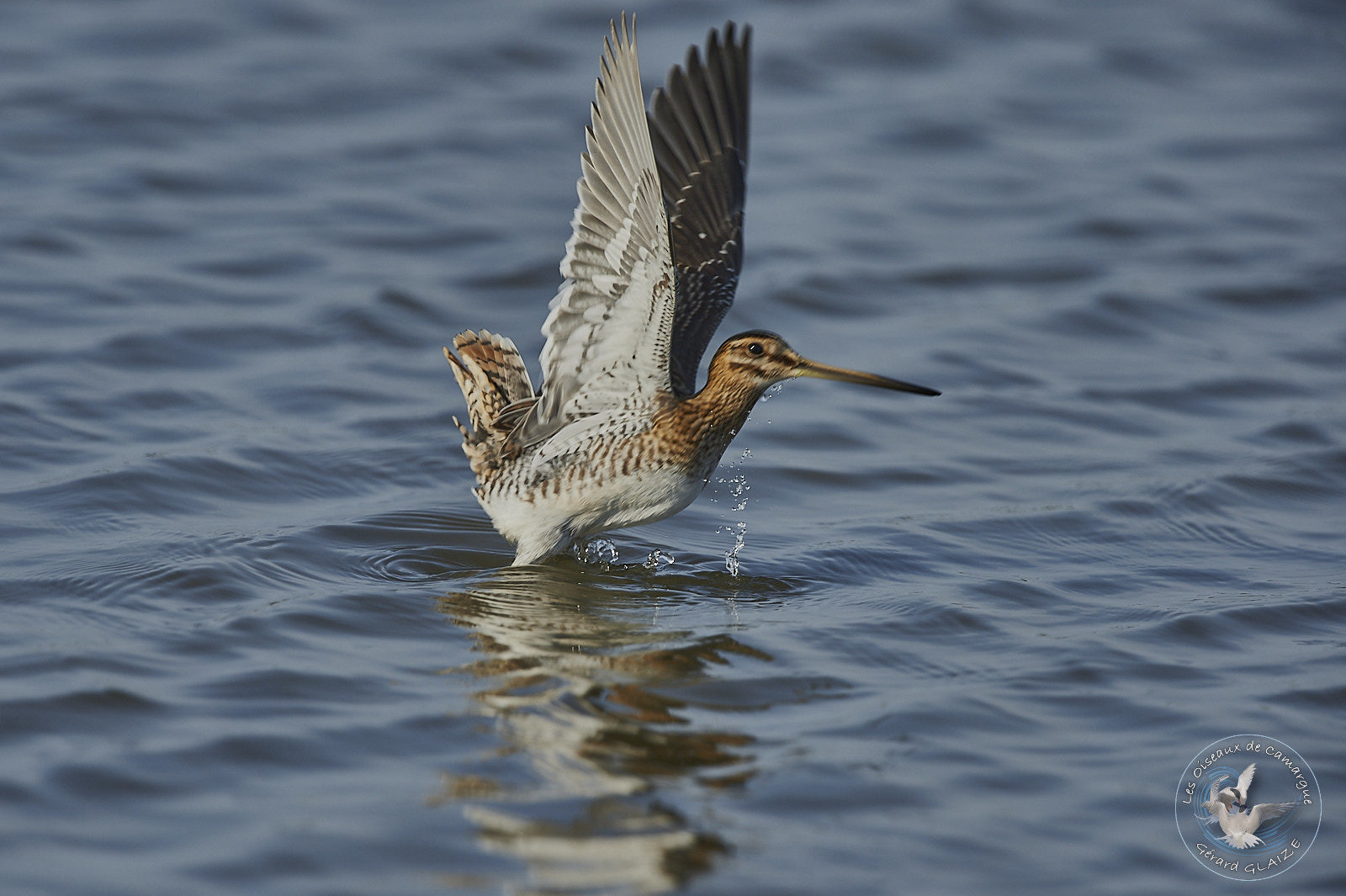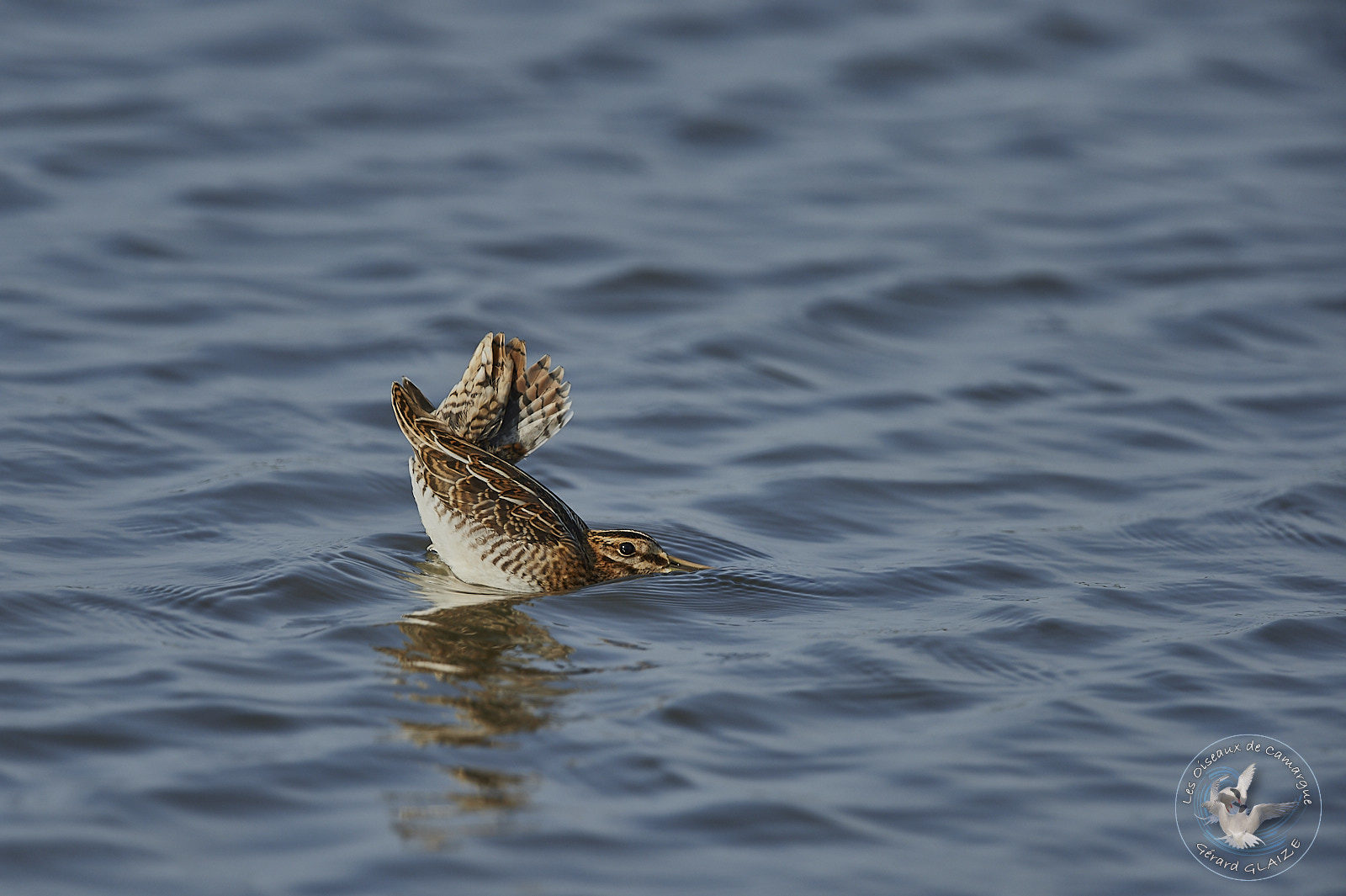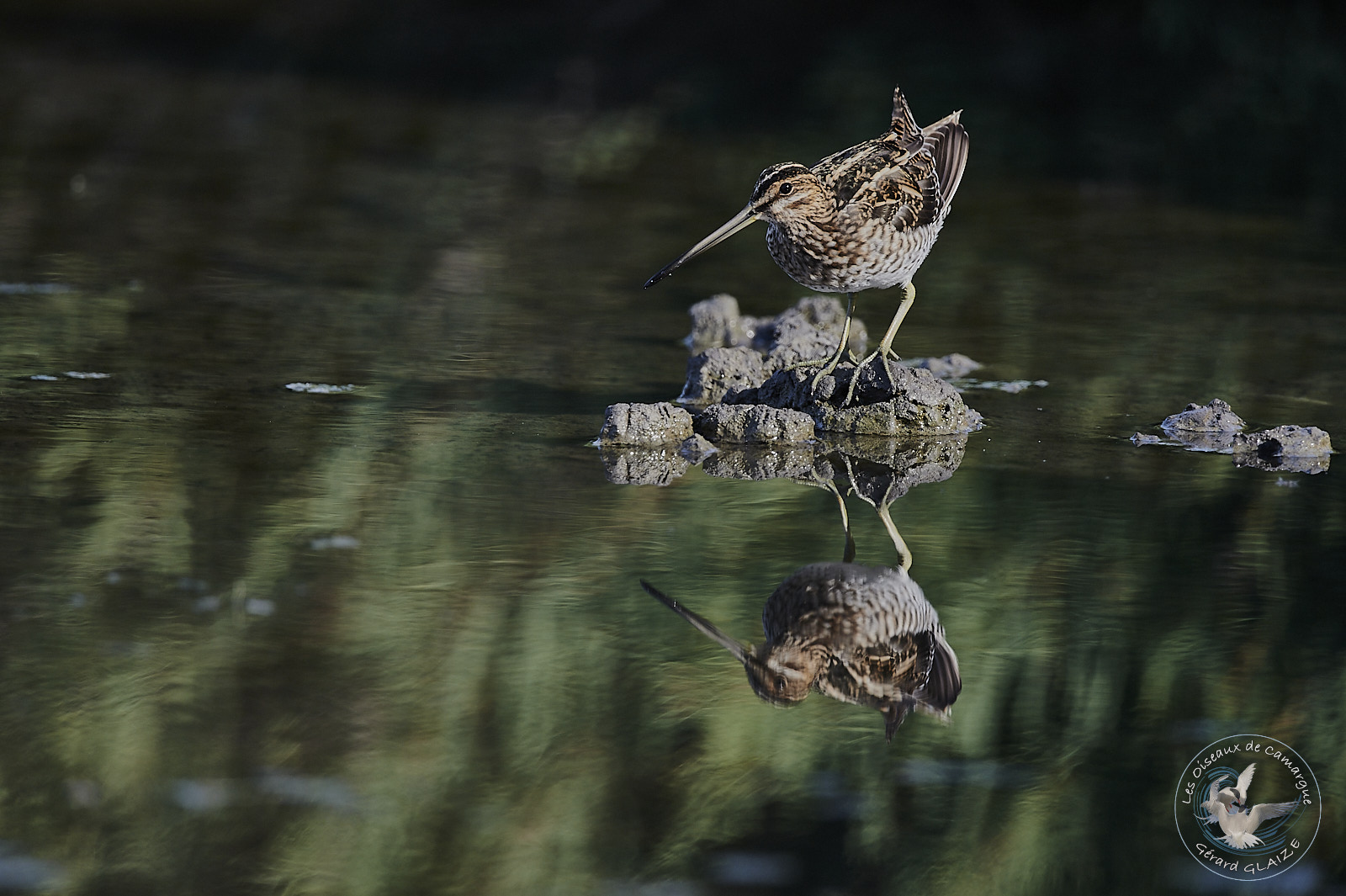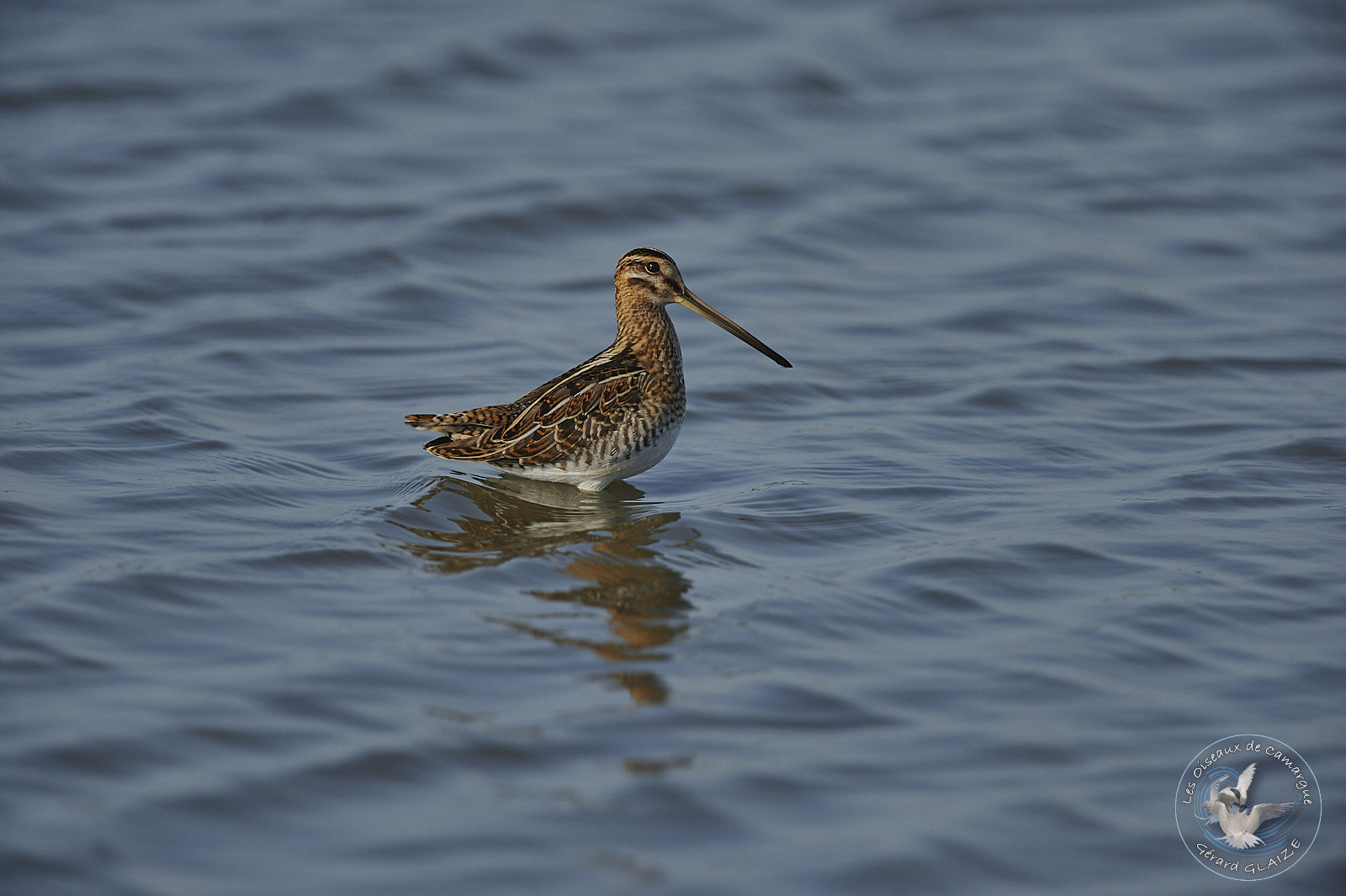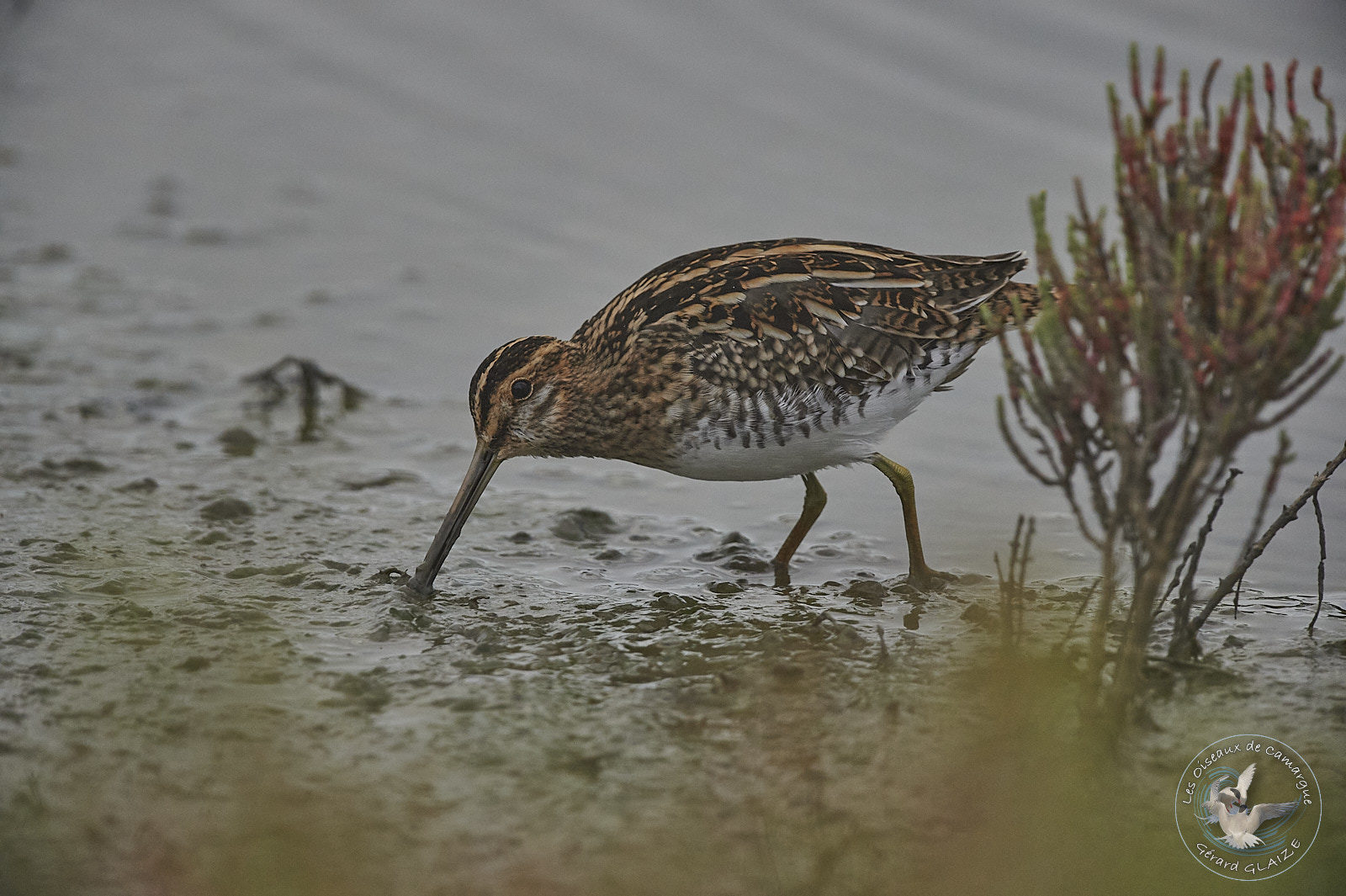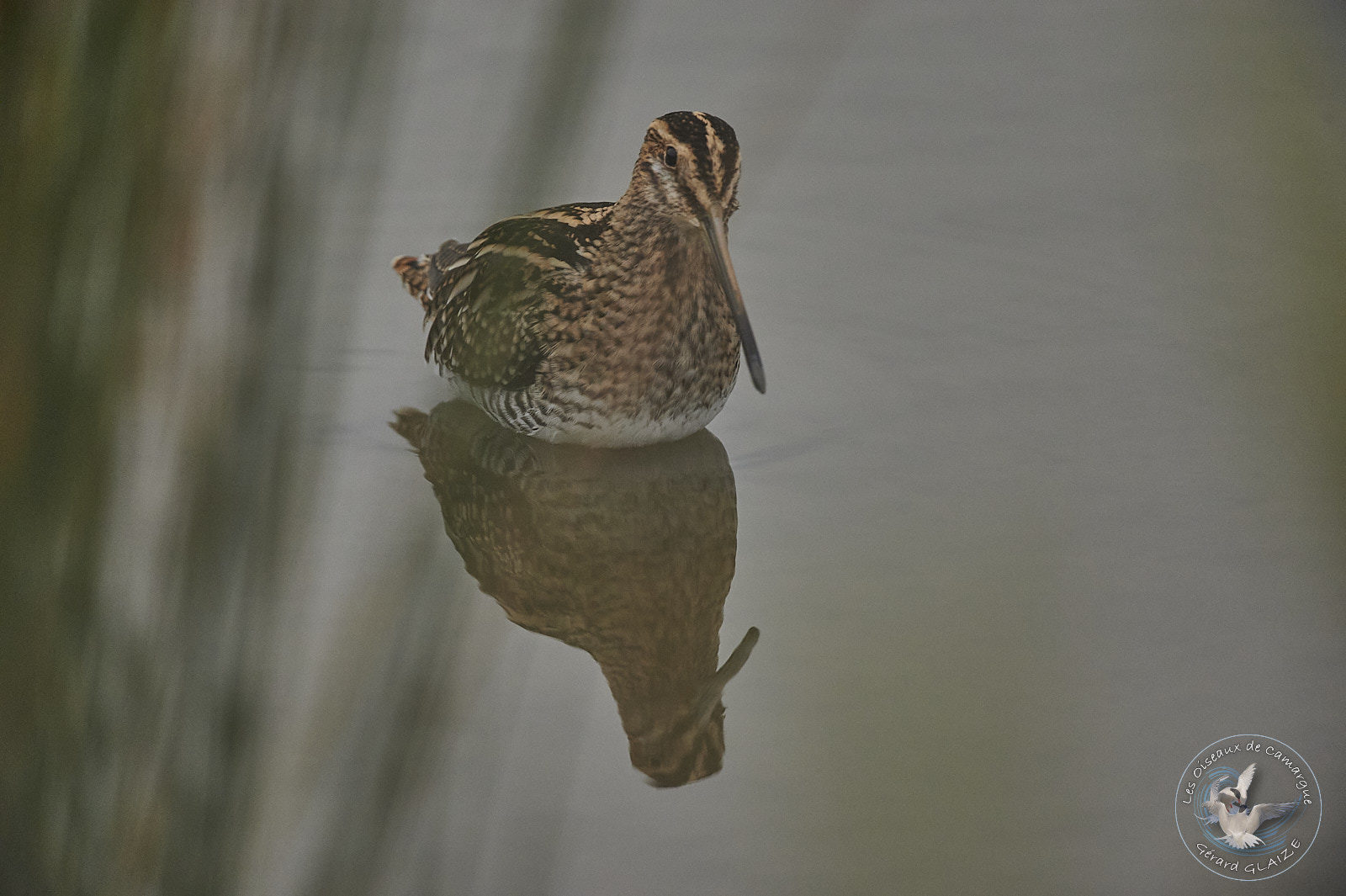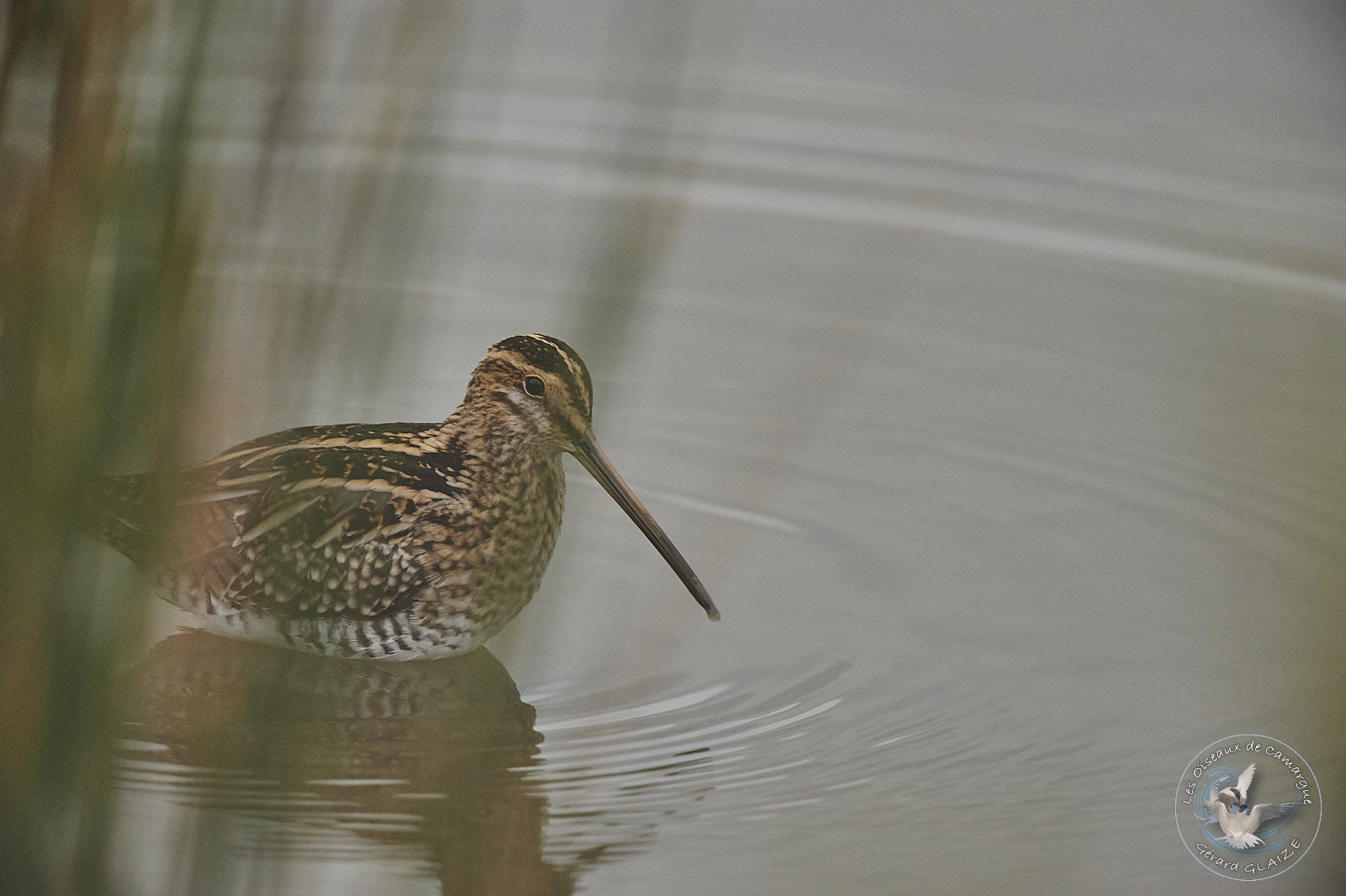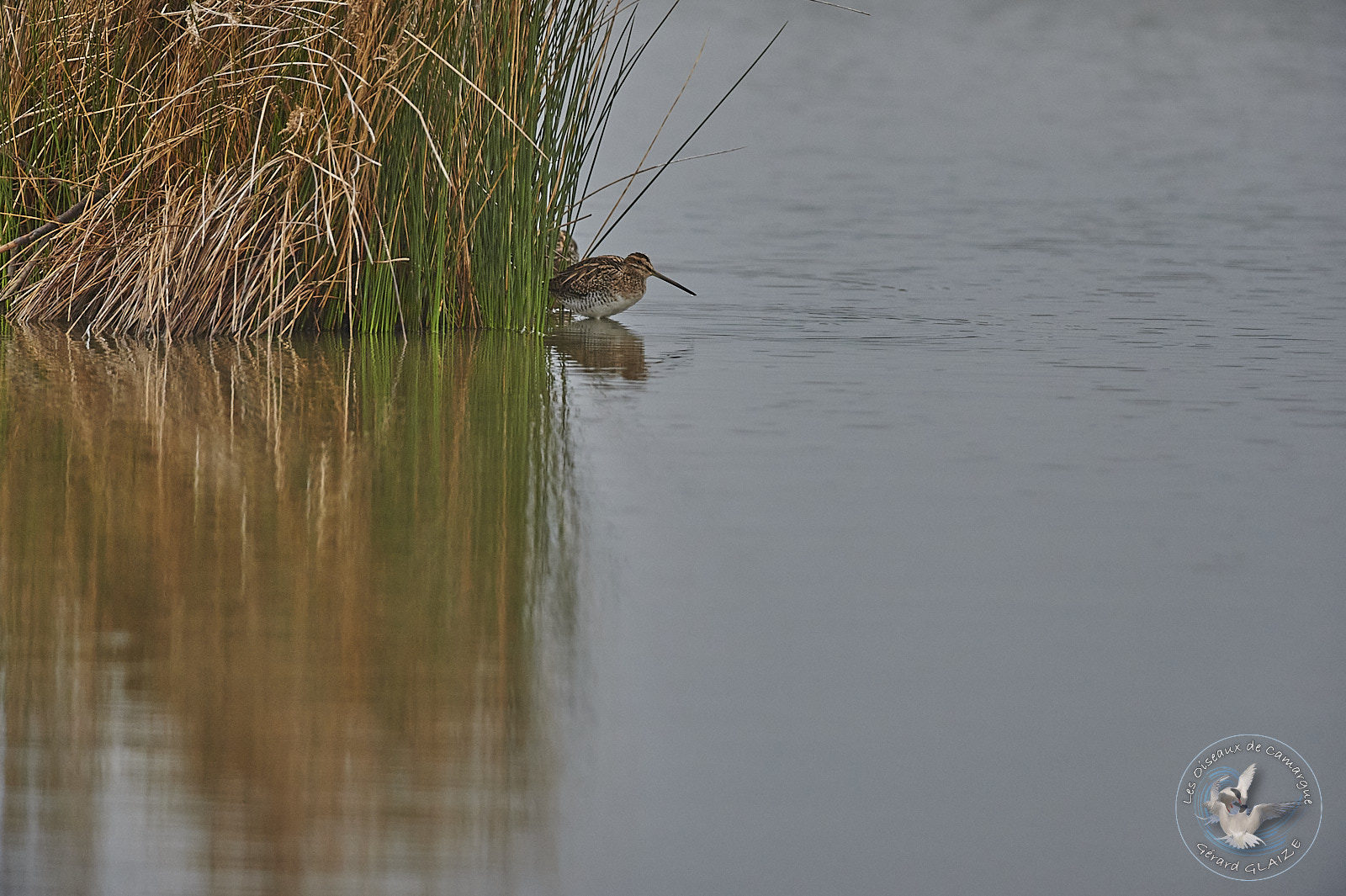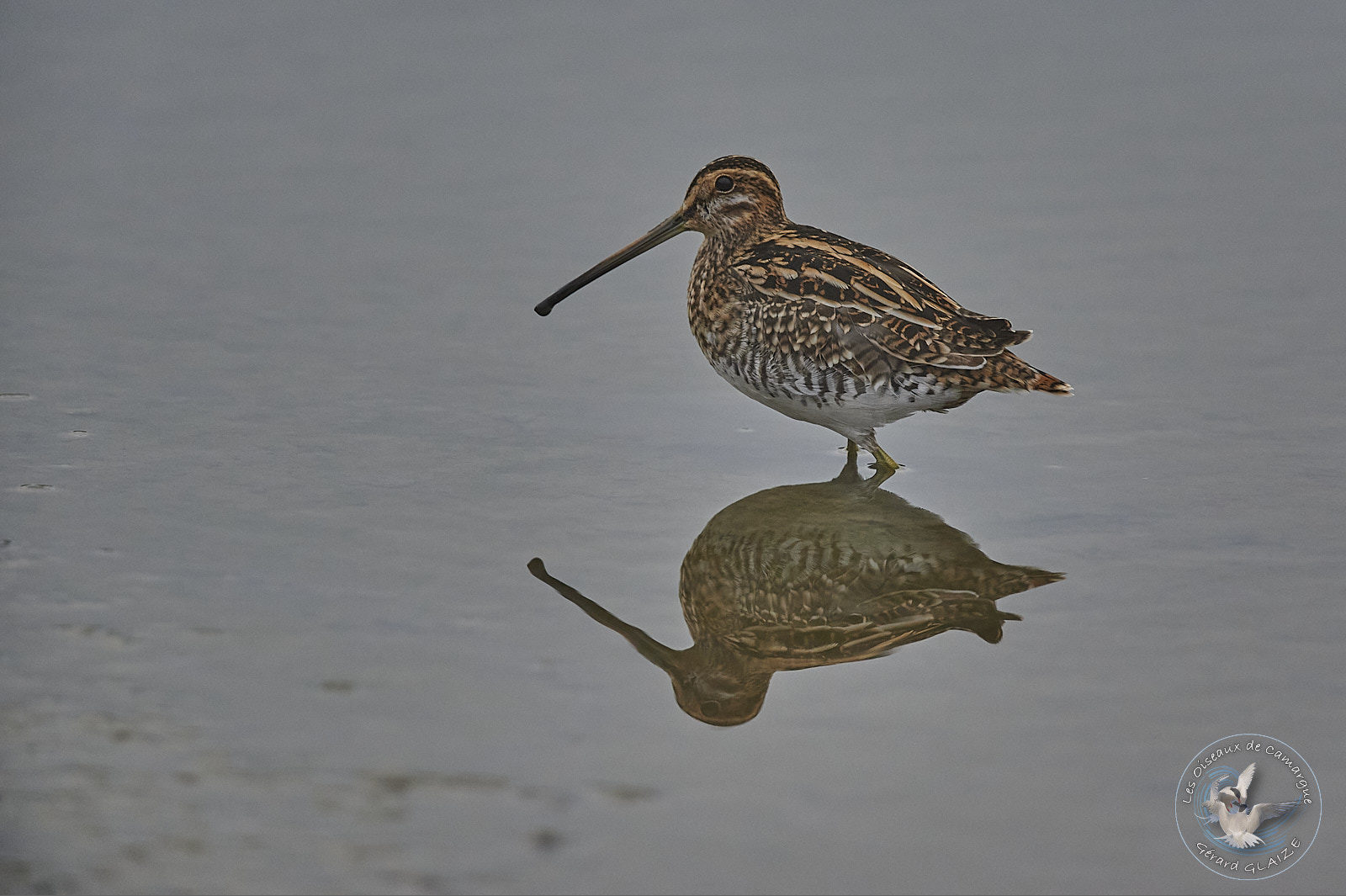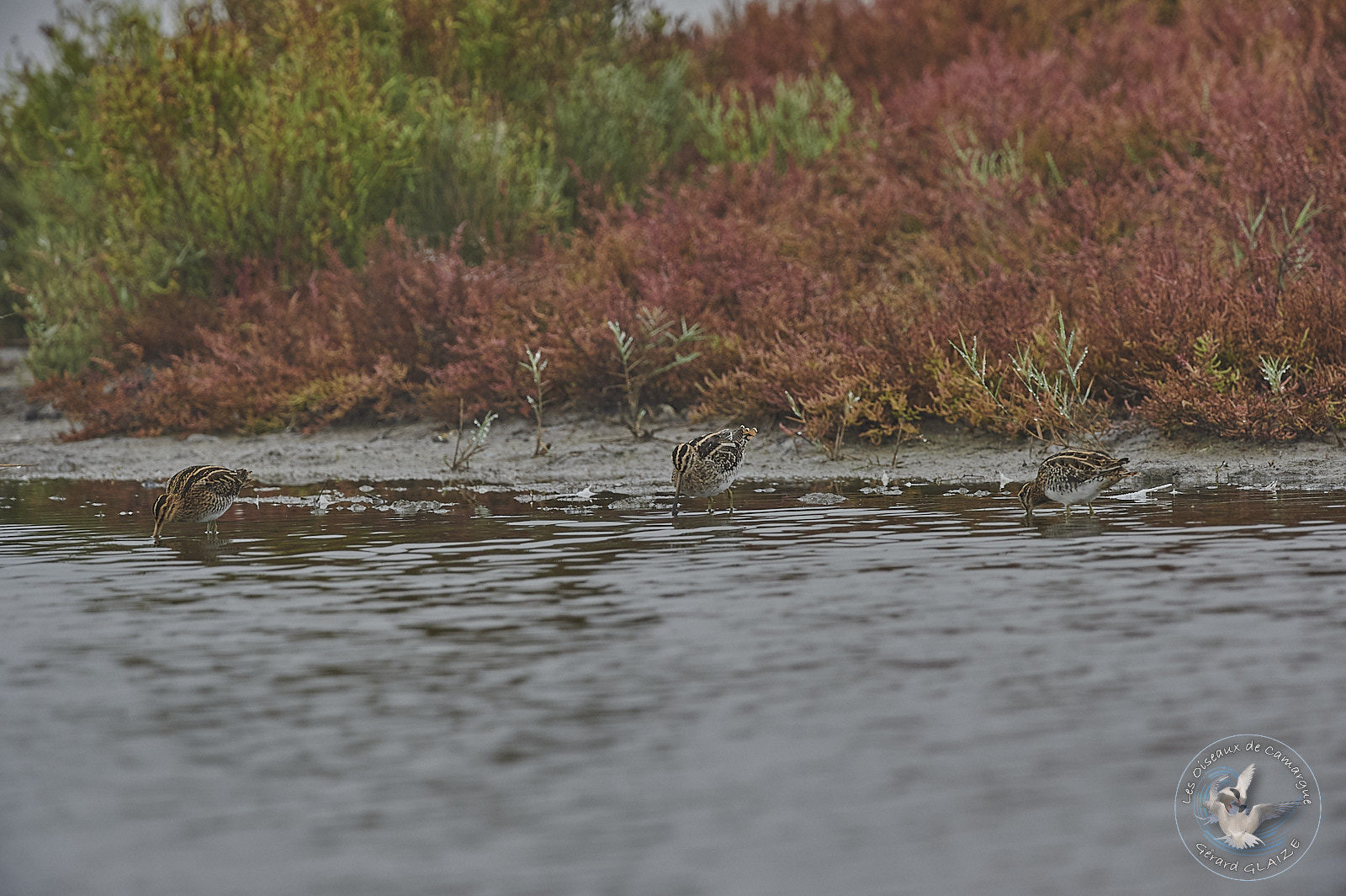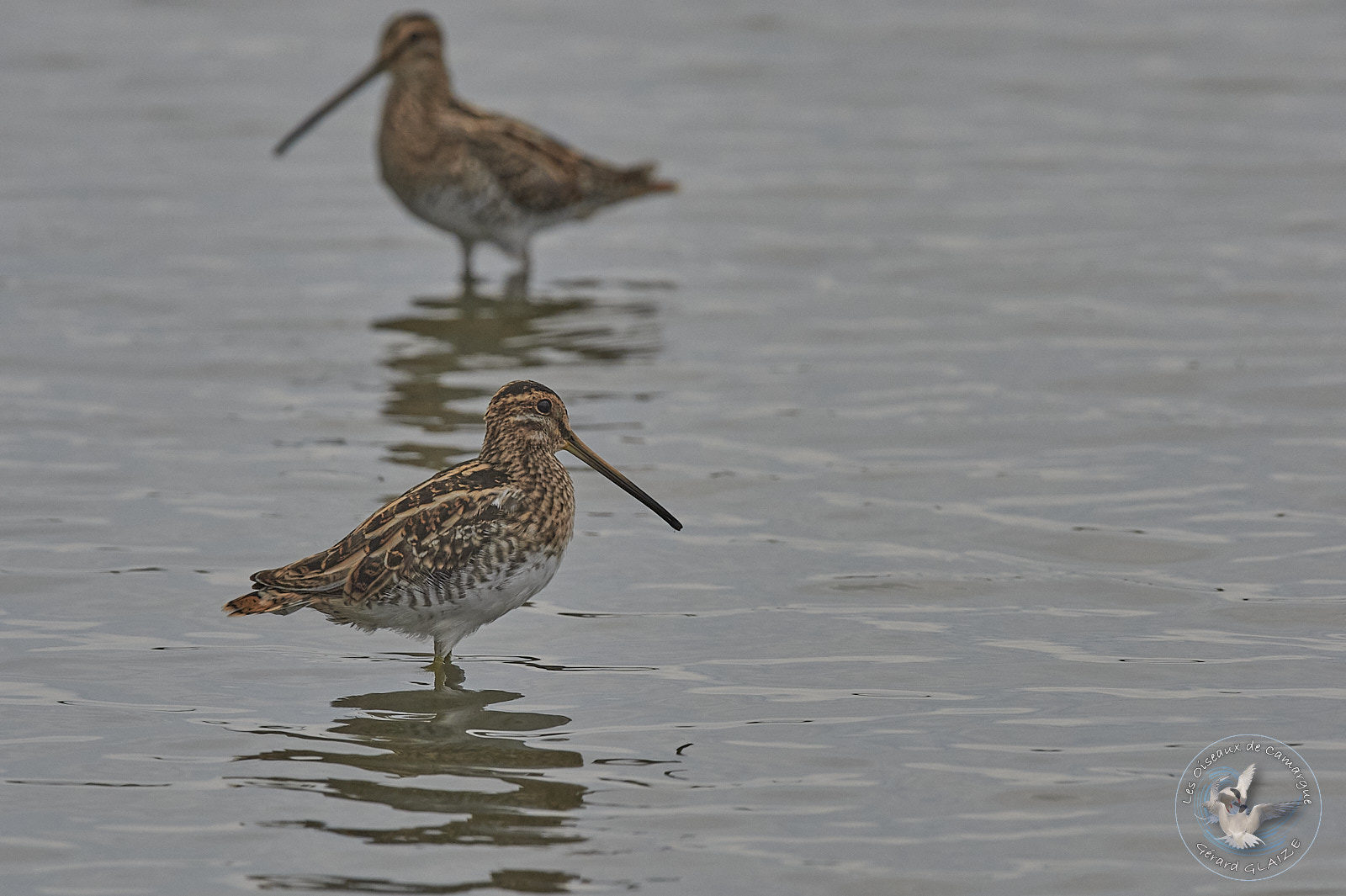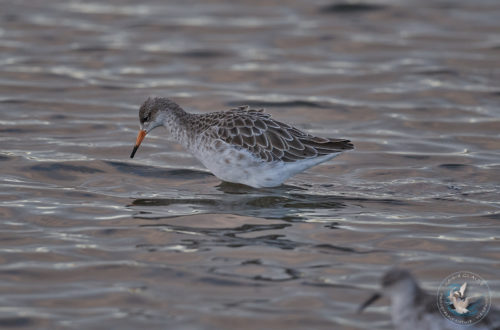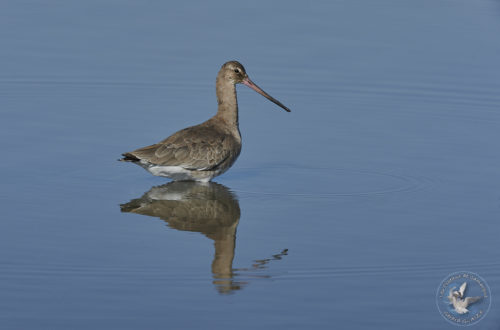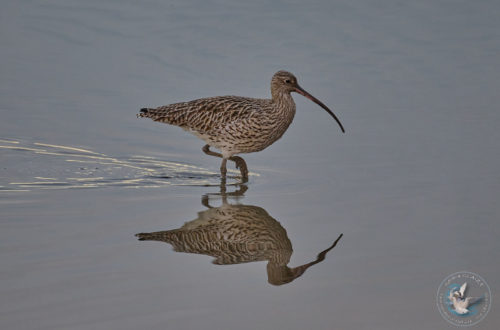Common Snipe
The common snipe is a wader the size of a blackbird. Its upperparts are striped and spotted with light and dark brown. Then the underparts are white with black stripes on the sides. The chest is buff, spotted with brown. Tail is fawn-coloured, finely barred with black. Wings are long and pointed. The head has clear stripes. Finally, its 7-centimetre-long beak is characteristic and allows it to be recognised. There is no sexual dimorphism.
Common Snipe
Scientific name : Gallinago gallinago
Family : Scolopacidae
Length: from 25 cm to 29 cm – Wingspan: from 37 cm to 46 cm
Weight : from 80 gr to 120 gr
IUCN Conservation Status: LC
Flight
The Common Snipe quickly gains height, zigzagging over a long distance with powerful and vigorous flight before alighting in cover. It flies in flocks apart from its courtship flights. These flights move by rocking and spinning rapidly before landing. It flies with the beak tilted downwards.
Habitat
The Common Snipe lives and breeds in wet grassy areas, at the edges of freshwater marshes and ponds, in flooded meadows, fields, and also, it can be found near salt marshes.
Regime – Diet
The Common Snipe feeds mainly on small animal prey (worms, but also insects, crustaceans, molluscs) that it captures by probing the mud. It feeds in shallow muddy waters, at the edge of lakes and ponds, near the cover of shore vegetation. The Common Snipe forages in small groups, often at dawn and dusk.
Nesting
Some snipe nest in the north-east of France, but most go to the far north, particularly the Scandinavian countries and western Russia.
The Common Snipe is monogamous, during the courtship displays the male performs high circles and then makes spectacular dives. The zigzag flights of the male, intended to delimit the territory, produce an audible sound due to the vibration of the tail feathers.
Common Snipe’s nest is a cup-shaped depression in the ground, on short clumps of grass and under low vegetation. This one is made of fine grasses, mosses, dead leaves, and lined with soft and fine plants. It is in principle well hidden in the hanging vegetation. The female lays 3 to 5 tawny or greenish eggs spotted with dark reddish brown. Incubation lasts about 18 to 20 days, by female. The young are precocial, they are raised by both parents during the first weeks.
Protection
Internationally, the Common Snipe is classified as Least Concern. Once widespread in Europe, the Common Snipe has however experienced a rapid decline since the 1980s. The drainage of swamps, the construction of canals, intensive agriculture or urbanization near its habitat are factors contributing to its population decrease. Bird classified in a poor state of conservation, but which is (alas) still huntable in France.
Other Links
- You can see the article from my site “Birds of Camargue” for more information on the Camargue and the Birds.


